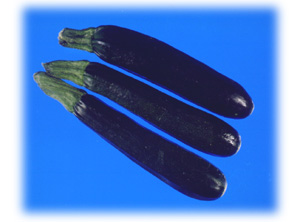
Long Before "Frost Is on the Punkin," Summer Squash Is Harvested
Summer squash varieties (C. pepo) are properly harvested for food while tender and immature, before either the seeds or the rinds have become firm or tough. The fruits are cooked with no prior preparation except washing and perhaps cutting into pieces of convenient size. In English-speaking countries other than the United States, they are generally called "vegetable marrows."
This kind is apparently the one most frequently described as "squash" by European visitors to our Atlantic coast during the early to late 17th century. Early in the preceding century, however, the European observers had referred to this type as a kind of gourd because of its superficial resemblance to Old World gourds.
Known in Europe from Colonial Times
A vining variety introduced as new in America in 1881 happened to be exactly like one described in Germany in 1552 and recognized as of American origin. Fruits like our present White Bush Scallop or Cymling were accurately illustrated by the French botanist Matthias Lobel in 1591, and the bush form of squash plant was known in Europe in the 17th century, if not earlier.

The White Bush Scallop was called Symnel in 1648, but Thomas Jefferson, in 1803, wrote it "Cymling," the commonest name for it in our South today. Our Summer Crookneck of today, named as a variety in seed catalogues as early as 1828, appears to be the same as a squash described by Champlain in 1605.
Thus it seems that the culture and use of summer squashes has been well known in Europe from the beginnings of colonial times here. Both European and American gardeners still grow many varieties that are substantially the same as those grown by pre-Columbian Indians.
The summer squashes have long been popular in Italy, as indicated by the names and varieties developed there-Cocozelle and Zucchini, for example-which have lately become popular in America.
Because of the fantastic success of hybrid corn (maize) in the past 20 years, plant breeders have developed hybrids of other plants in efforts to increase yields through hybrid vigor, and this has been tried with summer squash. Some success has been obtained, but the necessity of going over the seed-parent plants repeatedly at short intervals to remove the pollen-bearing flowers greatly increases the cost of producing hybrid squash seed as compared with hybrid corn seed. The object is to allow pollen-bearing flowers to develop only on those plants especially developed for furnishing pollen and thus ensuring that the seed which forms on the seed-parent plants will be hybrid.
The mistake that too many gardeners-and some farmmers-make in producing summer squash is letting the fruits become too tough and poor in quality before harvesting them. To be really good, the fruits of Cymling, Summer Crookneck, Summer Straightneck, Zucchini, the vegetable marrows, and such varieties must be harvested while so young that the rind has not developed noticeably.
The plants must be gone over every two or three days in hot weather, lest many fruits become too old before harvest. It requires only four to six days after bloom for a fruit of many of these varieties to reach the harvest stage. After two or three more days they are too old and tough to be desirable.
The American species of summer squash is grown to some extent in the warmer parts of Asia, but it is not well adapted to those lands. Orientals depend mainly on Asiatic forms of gourds for a product that is similar to our young summer squash fruit. These Asiatic gourds have not found favor in America because they are extremely rank-growing, late, and their fruits are considered here as less pleasing to the taste than our own squashes.
Little Pumpkins Grown on "Bushes"
A few years ago there was developed an early, very small-fruited variety of pumpkin borne on plants like those of bush summer squash. It is called Cheyenne Bush Pumpkin and was bred for adaptation to the short season and low average temperatures of the high plains east of the Rocky Mountains. The fruit is allowed to mature before use, as is that of most pumpkins.
This is perhaps as good a place as any to point out that neither squash nor pumpkin will cross-pollinate either watermelon or muskmelon. Growing squash or pumpkins near melons will not affect the quality of the melons, despite the persistent belief that it will make the melons taste like pumpkins. Bad weather, poor soil, or disease may make melons taste bad, but it is not due to crossing of squash or pumpkins with melons.